Beautiful culture and lovely people
So, you are travelling to Spain, the land of beautiful culture and lovely people. While your trip might give you butterflies in the stomach, the very idea of eating in Spain might not appeal to your vegetarian tastes. Of course, it isn’t impossible to find something to eat in a land known for its ham and meat. Nothing spoils a trip more than food that is below par. Worry not, because, contrary to popular belief, Spain is also the land of hidden delights for vegetarians.
Madrid, Seville, Granada, and Barcelona must be your top spots to visit. Fortunately, these are also the places where you can find good vegetarian restaurants to make your trip even more enjoyable.
Madrid
The city of Madrid is breath-taking with its adrenaline charged bullfighting and the picturesque Manzanares River. The food isn’t far behind either. Here are some restaurants vegetarians should watch out for:
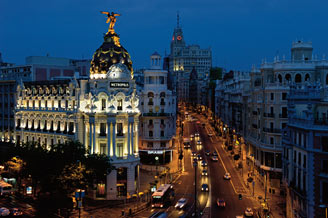 1. La Isla Del Tesoro, Bilbao – Walking into this restaurant is like walking into your dream garden and having lunch in it. There is a lot of variety for vegetarians to choose from. One of the favourites is the “Jungle Burger” but that isn’t quite the most surprising item in the great menu. They take a national cuisine as their theme every day and centre their menu around it, which makes every day a surprise.
1. La Isla Del Tesoro, Bilbao – Walking into this restaurant is like walking into your dream garden and having lunch in it. There is a lot of variety for vegetarians to choose from. One of the favourites is the “Jungle Burger” but that isn’t quite the most surprising item in the great menu. They take a national cuisine as their theme every day and centre their menu around it, which makes every day a surprise.
2. Restaurante Vega Viana, Chueca – Gorge on zucchini burritos that come with Manchengo cheese and carrot croquettes that are served with yoghurt cream and sultanas. The menu is in English, and it has options for your carnivore eating friends as well.
3. El Estragón, La Latina - Every vegetarian tourist swears by this restaurant and it is, undoubtedly, one of the best vegetarian places in Madrid to eat. Another great thing is the affordability of the restaurant that makes matters even better. They do use butter in their dishes, though, so vegans might need to ask if they can cook them in oil.
Barcelona
This colourful city and the gentle Mediterranean are slowly embracing vegetarian food. The little vegetarian places cropping up everywhere are an indication. There are a lot of fun options for you to explore here:
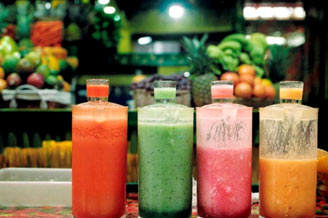 1. La Bascula – This eco restaurant uses everything organic, from its juices to its food. The eating utensils and plates are bio degradable. The food is to die for as the desserts are homemade and the meals are immensely satisfying.
1. La Bascula – This eco restaurant uses everything organic, from its juices to its food. The eating utensils and plates are bio degradable. The food is to die for as the desserts are homemade and the meals are immensely satisfying.
2. Teresa Carles – It’s like walking into New York with its wooden tables and neat interiors. The restaurant has a huge variety for vegetarians as well as the meat eaters if you are in a group and the food is traditional and tasty.
3. Vegetalia – This place is calm and when you’re in it, you want to do nothing but quietly sip your smoothie while standing on the terrace. However, if you do have time, the food is great and exotic. The vegetable paella has many fans and the tofu tempura is delicious as well.
Granada
The weather is lovely here, and the mood is forever hippie. Just lay back and enjoy the small and lazy city with its gorgeous food. Most restaurants have options for both vegetarians and Vegans, and here are a few places to look out for:
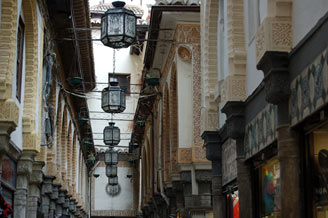 1. HICURI – A fully Vegetarian restaurant. There are also options for vegans on the menu. You can choose from the prix fixe and a-la-carte options. It is prudent for tourists working on a tight budget to choose prix fixe and their lasagne is a speciality. Beer and Tapa dishes combined are €1.80. The cream soup and chocolate cake are a favourite for everyone and you should definitely try them.
1. HICURI – A fully Vegetarian restaurant. There are also options for vegans on the menu. You can choose from the prix fixe and a-la-carte options. It is prudent for tourists working on a tight budget to choose prix fixe and their lasagne is a speciality. Beer and Tapa dishes combined are €1.80. The cream soup and chocolate cake are a favourite for everyone and you should definitely try them.
2. Muglia II – Are you missing Indian food in Spain? This restaurant serves authentic Naan and Indian curry for Indian food lovers who appreciate the spice palate. Even foodies who know Indian food appreciate this place for its great meals.
3. Hannigan & Sons – This is a nice Irish pub and you can hang out here with your friends and sip on an ice cold beer, or try their Veggie burger with fries, which is filling and delicious. For a list of vegetarian beers in Spain visit here.
Seville
You’ll find quite a few nice places here:
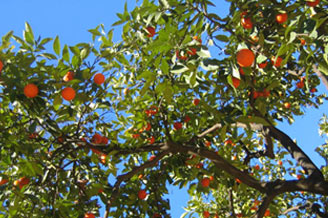 1. Almanara Restaurant – The décor at this place is minimalistic and the food is anything but that. Treat your taste buds with gorgeous and fresh dishes and have generous helpings of goat cheese.
1. Almanara Restaurant – The décor at this place is minimalistic and the food is anything but that. Treat your taste buds with gorgeous and fresh dishes and have generous helpings of goat cheese.
2. Gaia Restaurant – The food used is organic and there are options for vegans. You must try the hummus and the cream tomato soup if you visit this place.
Knowing a few good vegetarian places to eat might make your trip better, if you would like to find more restaurants across Spain you can also use Happy Cow; they have a huge database of Vegetarian and vegan eateries. Enjoy in Spain, the place that taught the world how to have fun and if you are a Vegetarian in Spain and want to venture out to a new country see these Vegetarian options around the world.
Preeti Vadgama is a lifelong Vegetarian who likes to write about the best Vegetarian places to eat around the world. She works for HostelBookers.com in London.
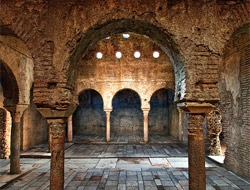


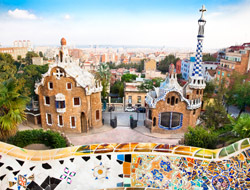
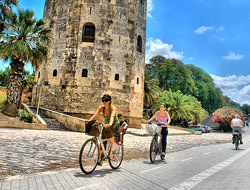
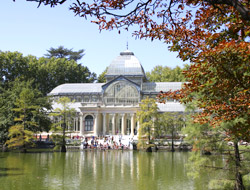
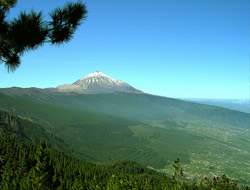
 1. La Isla Del Tesoro, Bilbao – Walking into this restaurant is like walking into your dream garden and having lunch in it. There is a lot of variety for vegetarians to choose from. One of the favourites is the “Jungle Burger” but that isn’t quite the most surprising item in the great menu. They take a national cuisine as their theme every day and centre their menu around it, which makes every day a surprise.
1. La Isla Del Tesoro, Bilbao – Walking into this restaurant is like walking into your dream garden and having lunch in it. There is a lot of variety for vegetarians to choose from. One of the favourites is the “Jungle Burger” but that isn’t quite the most surprising item in the great menu. They take a national cuisine as their theme every day and centre their menu around it, which makes every day a surprise. 1. La Bascula – This eco restaurant uses everything organic, from its juices to its food. The eating utensils and plates are bio degradable. The food is to die for as the desserts are homemade and the meals are immensely satisfying.
1. La Bascula – This eco restaurant uses everything organic, from its juices to its food. The eating utensils and plates are bio degradable. The food is to die for as the desserts are homemade and the meals are immensely satisfying.  1. HICURI – A fully Vegetarian restaurant. There are also options for vegans on the menu. You can choose from the prix fixe and a-la-carte options. It is prudent for tourists working on a tight budget to choose prix fixe and their lasagne is a speciality. Beer and Tapa dishes combined are €1.80. The cream soup and chocolate cake are a favourite for everyone and you should definitely try them.
1. HICURI – A fully Vegetarian restaurant. There are also options for vegans on the menu. You can choose from the prix fixe and a-la-carte options. It is prudent for tourists working on a tight budget to choose prix fixe and their lasagne is a speciality. Beer and Tapa dishes combined are €1.80. The cream soup and chocolate cake are a favourite for everyone and you should definitely try them.  1. Almanara Restaurant – The décor at this place is minimalistic and the food is anything but that. Treat your taste buds with gorgeous and fresh dishes and have generous helpings of goat cheese.
1. Almanara Restaurant – The décor at this place is minimalistic and the food is anything but that. Treat your taste buds with gorgeous and fresh dishes and have generous helpings of goat cheese. 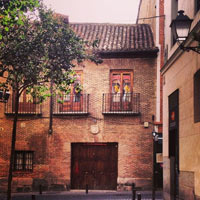 1. Madrid
1. Madrid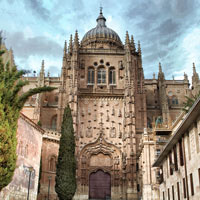 2. Salamanca
2. Salamanca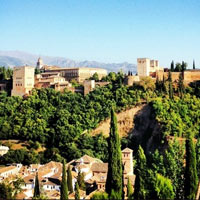 3. Granada
3. Granada 4. Tenerife
4. Tenerife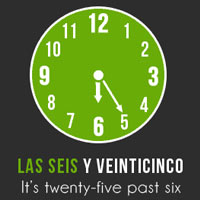 5. Infographic
5. Infographic